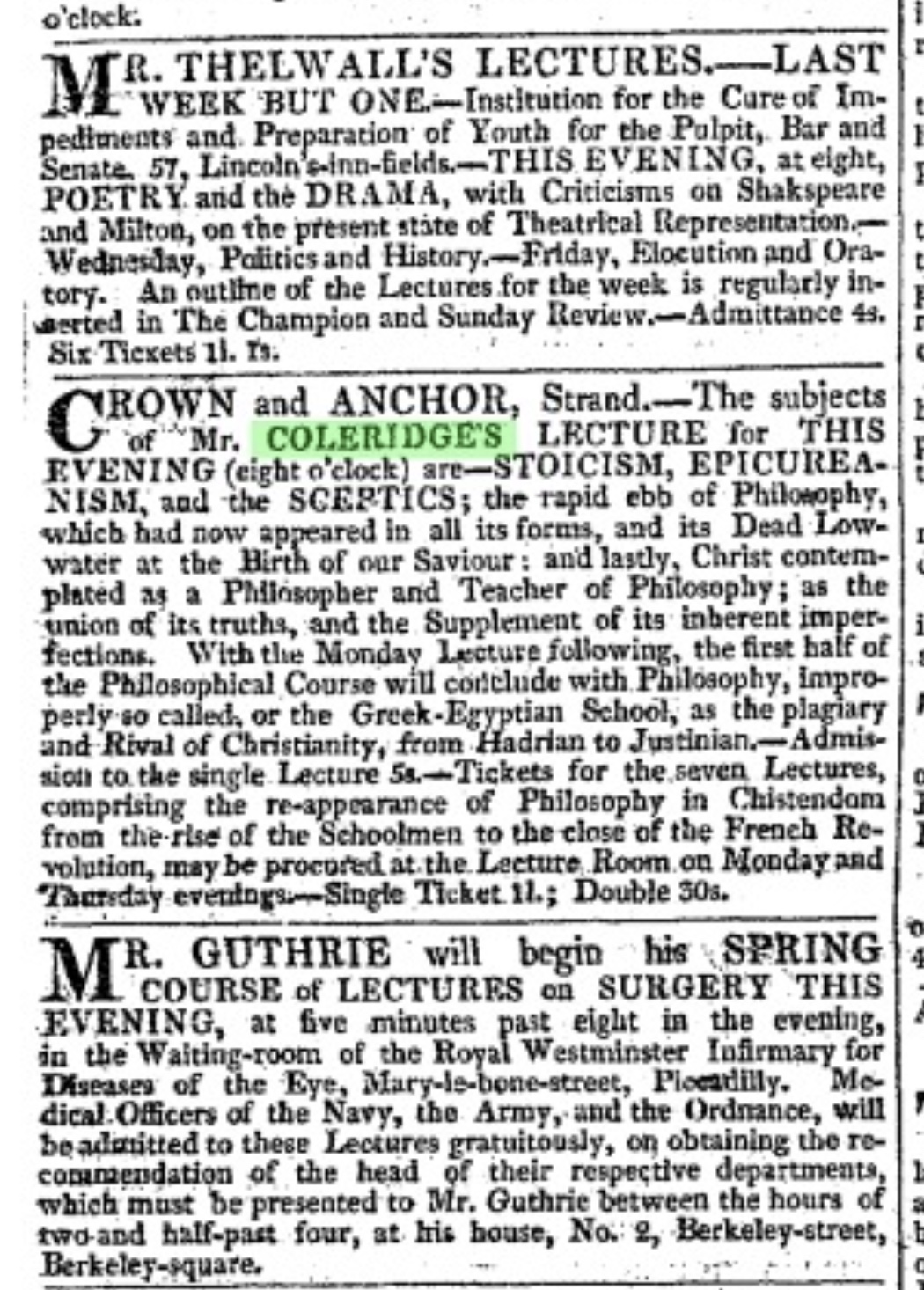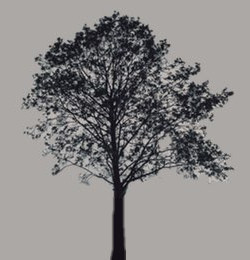11 April 1819: Two Miles & a Thousand Things
: A Walking Talk by Coleridge
Toward Highgate in a lane by Lord Mansfield’s Park
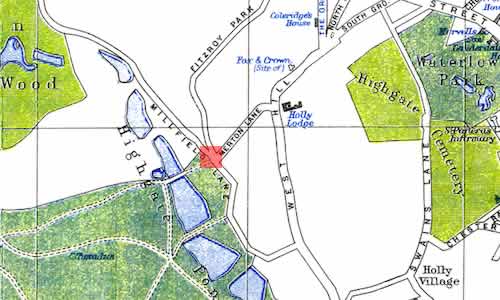
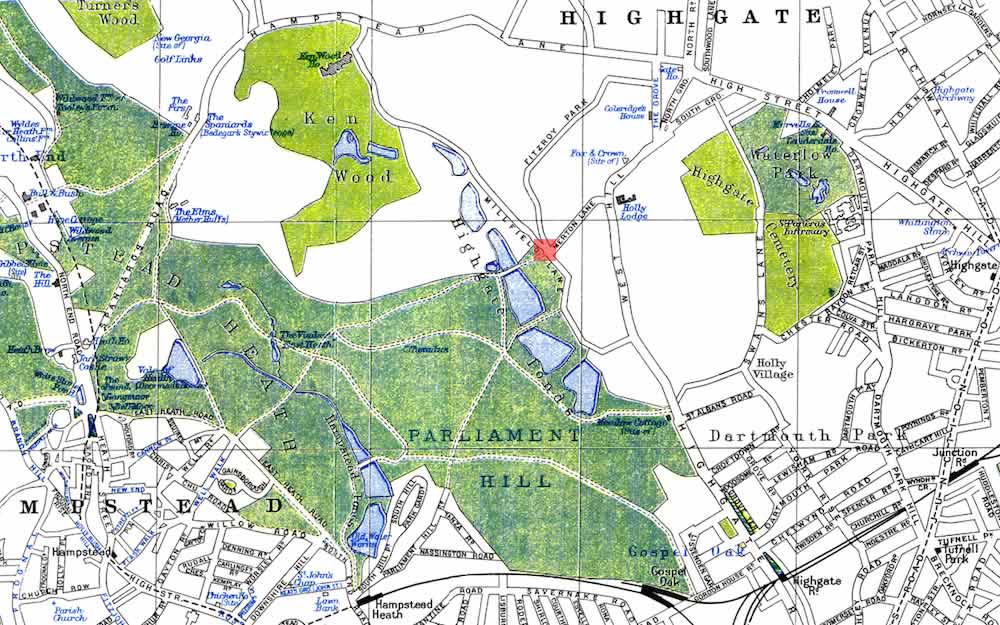
Where, on a walk toward Highgate in a lane by Lord Mansfield’s Park (Kenwood
or Ken
Wood
), Keats, aged twenty-three, has a chance encounter with the poet, journalist,
lecturer, and literary critic/philosopher Samuel
Taylor Coleridge, who, at age forty-seven, is already a living legend. Coleridge
lives in Highgate at the time (under the kindful watch of Dr. James Gillman), and
is walking
with someone Keats knew from his medical training at Guy’s Hospital, Joseph Henry
Green.
Coleridge (1772-1834) is forever paired with Keats’s most important contemporary poetic influence, William Wordsworth: Coleridge and Wordsworth were, earlier in their writing careers, close friends and co-writers of perhaps the most important single collection of the age, Lyrical Ballads (1798, 1800/1801, 1802), though the volume will, after the first anonymous edition, go under Wordsworth’s name only, with Coleridge’s contribution fizzling; at the same time, Coleridge develops a somewhat neurotic jealousy of Wordsworth’s domestic circumstances, since Coleridge’s at the time are in disrepair. Toward the end of 1818, Coleridge publishes his three-volume edition of The Friend, which collects some of his earlier writing. He also gives numerous lectures over 1818-1819, on both literature and philosophy.* But at this point, in 1819, the poet in Coleridge is all but gone.
Keats’s describes the conversation and gives a brilliant and very humorous account
of Coleridge’s character and sprawling brilliance:
I walked with him at his alderman-after dinner pace for near two miles I suppose.
In
those two miles he broached a thousand things [ . . . ]—Nightingales, Poetry—on Poetical
sensation—Metaphysics—Different genera and species of Dreams—Nightmare—a dream accompanied
[with] a sense of touch—single and double touch—A dream related—First and second
consciousness—the difference explained between will and Volition—so many metaphysicians
from
a want of smoking the second consciousness—Monsters—the Kraken—Mermaids—Southey believes
in
them—Southey’s belief too much diluted—A ghost story—Good morning—I heard his voice
as he
came towards me—I heard his voice as he moved away—I had heard it all the interval—if
it may
be called so
(letters, 15-16 April 1819). This is, arguably, one of the best
descriptions of Coleridge’s complex, ranging character and train of thought.
According to Coleridge’s account of the event
more that 10 years later, Keats returns after they part to press
Coleridge’s hand as a
gesture of reverence to the older poet. Coleridge recalls that he felt death in that
hand,
and when asked how, he recalls detecting some heat and a dampness
in
Keats’s palm. Coleridge here exhibits his gift of enhanced imaginative hindsight.
Coleridge
also remembers the encounter as just a minute or two, though it was probably closer
to thirty
minutes.
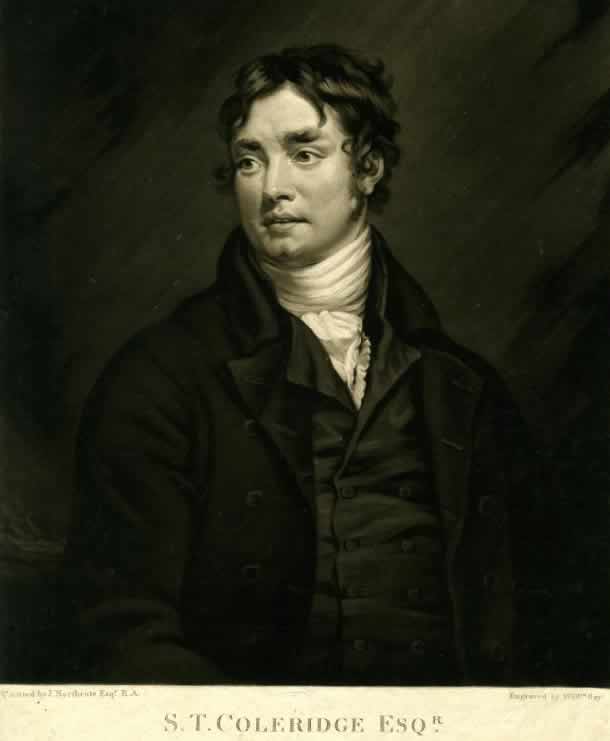
Keats is acquainted with much of Coleridge’s
poetry and some of his poetics. Importantly, in formulating his remarkable theory
of
Negative Capability
(letters, 21/27 Dec 1817), Keats does so fully in the
context of what he sees as Coleridge’s need to find some sense of truth, fact, reason,
or
certainty, when, instead, Keats posits that the pursuit and expression of beauty
obliterates
uncertainty, doubt, and mystery. An ego-less, empathetic, and open
imagination is what Keats hopes to embody in his best poetry, and with an explorative
voice
that balances disinterestedness with intensity, and with possibilities over certitude;
beauty
provides (or is) its own truth. Keats, however, may not be quite correct in his assessment
of
Coleridge’s poetry, though he may be in assessing Coleridge’s intensely rambling theories
and
poetics (Keats views are likely swayed by William
Hazlitt’s criticisms of Coleridge). In truth, Coleridge’s Kubla Khan may be the most negatively capable poem in the English language, and
certainly some of his best poetry consciously opens up to speculation, irresolution,
and
imaginative leaps; correspondingly, Coleridge’s literary theory of willing suspension of
disbelief
(expressed in 1817 in his Biographia Literaria)
falls in the direction of Keats’s theory, in that it, too, suggests there are truths
in the
impossible via the imagination. [For more about Coleridge’s complex character and
Keats’s
encounter with Coleridge, see my Desperately Seeking
Coleridge.]
At this point in mid-April 1819, Keats notes that he has passed many days in rather a low
state of mind
(letters, 16 April), yet he remains busy socially—wining, dining,
visiting, partying, entertaining, going to galleries, talking to beautiful girls,
taking in
the opera. Toward the end of this period, and after an all-nighter playing cards with
some
close friends, he is so exhausted he says he is not worth a sixpence
(letters, 21
April). Keats also struggles to express his own uncertain finances to his very good
friend,
the painter Benjamin Robert Haydon, who is very
upset that Keats had given him false hope for receiving some money as a personal loan.
Keats
apologizes, while trying to explain how his inheritance money has been drained and
held back
by the workings of the trustee of the estate, Richard
Abbey (letters, 13 April).
In terms of his own poetic progress, Keats remains stagnated—fermenting might be the
better
image, given what we know is to come—just as he has for the first few months of 1819.
On 15
April he writes, I am still at a stand in versifying—I cannot do it yet with any pleasure—I
mean to look around at my resources and means—and see what I can do without poetry.
This
does not bode well (continuing worry over money clearly does not help), though there
is a
vague hope in one word: yet.
In fact, within a matter of days, Keats will begin to
break out of his poetic funk, with April the gateway to his remarkable progress into
the
spring of 1819. He has, then, not given up on his climbing poetic aspirations, and
this
encounter with Coleridge on 11 April—the turn of his mind, the depth and range of
his ideas,
the figuring and importance of consciousness—may have pushed Keats’s poetic progress.
Thus
Keats continues to study and read great poetry, and on the 16th he reports how pleased
he is
with the fifth canto of Dante’s
Inferno. But this pleasure may be more tied to a wonderful
floating and kissing dream he has, based upon reading Dante.
